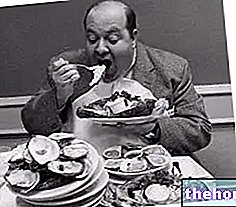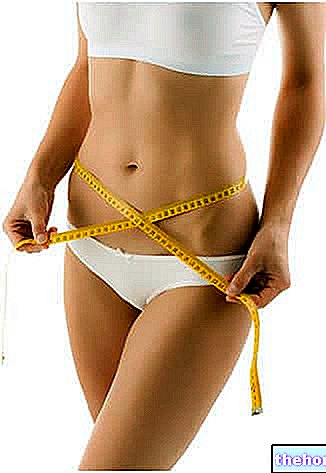Edited by Dr. Stefano Casali
»Definition of Obesity
Increase in body weight, due to an increase in the body's adipose mass (FM), as a consequence of a positive energy balance, associated with metabolic abnormalities and a greater risk of cardiovascular diseases.
»Childhood obesity
Obese children do not consume more calories than required by nutritional standards.
In the age group 4-6 years, the average energy consumption is 25% lower than the caloric intake, due to the reduction of physical activity.
In particular, about 50% of boys and 75% of girls do not carry out any form of physical activity, even modest, two to three times a week.
»Overweight in developmental age
Body weight between 110-120% of ideal weight for height and gender, using Tanner's boards
A BMI (Kg / m2) between 10 and 20%, compared to the BMI corresponding to the 50th percentile for sex and age (Rolland - Cachera, 1982)
Obese is defined as the child whose triceps fold has a thickness greater than the "85th percentile for age and sex according to the reference tables (Tanner, 1975)
or
Body weight greater than 120% of ideal weight for height and gender, using Tanner's boards
Obese is defined as the child with a BMI (Kg / m2) higher than the 97th percentile for age and sex, based on the reference tables (Rolland-Cachera, 1982)
It is useful to perform both measurements on the same subject to increase the level of diagnostic accuracy.
»Nutritional aspects of obesity in the developmental age
Caloric intake mostly equal to or even lower than that of normal weight.
Tendency to underestimate food intake.
Higher intake of simple sugars and fats.
Dietary intake of lipids correlates with the degree of obesity.
Inability to recognize the feeling of hunger and satiety.
»Energy aspects of obesity in the developmental age
BMR (basal metabolism), TEF (food thermogenesis), EEF do not show significant defects.
BMR higher than that of a normal weight child due to increased lean mass.
Inconsistent and minimal reduction in TEF, corrected by weight loss.
Increased sedentary lifestyle (TV, PC, video games).
Total EEF is increased by LM increase but EEF / Kg BW is inversely proportional to adiposity.
The maximum level of performance for exercises that involve lifting the body (running, walking, jumping, etc.) is lower in the obese.
»Factors determining the appearance of obesity between 6-17 years
Familiarity.
The sedentary lifestyle (as a lifestyle).
Education level of the mother.
The socio-economic status.
»How to fight obesity in childhood
Drastically limit your intake of simple sugars and fats.
Nutritional rehabilitation with recovery of the recognition of the feeling of hunger and satiety.
Combat a sedentary lifestyle and practice regular aerobic training exercise.
Prevention of boredom and identification of activities and hobbies that excite the child or adolescent.
The family must also be involved in the intervention.
»Fabrics and energy costs
In the "area of lean mass, the most metabolically active tissues are the viscera: + 20 times compared to the reference unit (g) of muscle mass,
so
Contrary to popular belief, the muscles consume much less than the viscera, however their great extension in the organism makes the muscle tissue the main component of the total energy expenditure,
so
Per unit of reference (g), the brain, liver, kidney consume much more than muscle.
»Age, gender and energy expenditure
The energy consumption of lean mass is related to its metabolic efficiency (EE / Kg) and quantity.
In younger people it is higher than in older adults, who have a progressive loss of muscle tissue with age (sarcopenia).
Energy consumption in women is lower than in men because muscles are less represented in them.
Other articles on "Overweight and Obesity"
- Sports activity and obesity
- Exercise and obesity
- Benefits and Risks of Physical Activity in Obesity
- The obese subject and physical activity
- Aerobic exercise and obesity




























